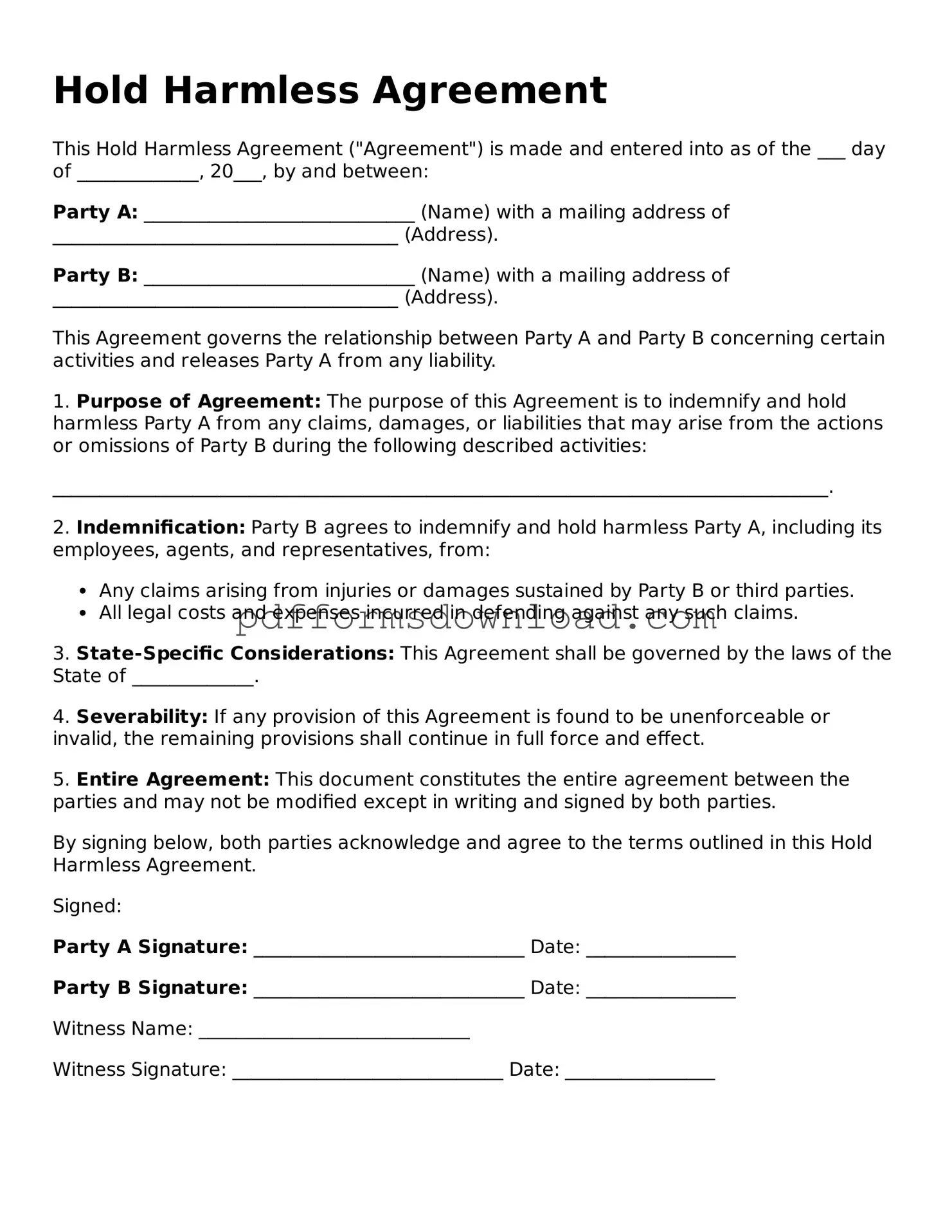What is a Hold Harmless Agreement?
A Hold Harmless Agreement is a legal document in which one party agrees to assume the liability and protect another party from any claims, damages, or losses that may arise during a specific activity or event. This type of agreement is often used in situations where one party may be exposed to risks, such as during construction projects, events, or activities involving physical risks. By signing this agreement, the party accepting the risk agrees not to hold the other party responsible for any resulting injuries or damages.
Why is a Hold Harmless Agreement important?
This agreement is crucial for protecting individuals and organizations from potential legal claims. It helps clarify responsibilities and expectations between parties. By having a Hold Harmless Agreement in place, you can minimize the risk of costly legal disputes. It also provides peace of mind, knowing that you have taken steps to safeguard your interests while participating in activities that may involve some level of risk.
Who typically uses Hold Harmless Agreements?
Hold Harmless Agreements are commonly used by a variety of parties, including businesses, contractors, event organizers, and individuals participating in recreational activities. For example, a contractor may require a Hold Harmless Agreement from a client before starting work on their property. Similarly, a sports organization might ask participants to sign such an agreement before engaging in activities that could lead to injury.
What should be included in a Hold Harmless Agreement?
A well-drafted Hold Harmless Agreement should include several key elements. First, it should clearly identify the parties involved. Next, it should outline the specific activities or events covered by the agreement. Additionally, it should detail the extent of the liability being assumed and any limitations or exclusions. Finally, it’s important to include a section on governing law, which specifies which state’s laws will apply to the agreement.
Can a Hold Harmless Agreement be enforced?
Yes, a Hold Harmless Agreement can be enforced in a court of law, provided it is properly drafted and signed by all parties involved. However, there are some limitations. Courts may not enforce agreements that are overly broad or that attempt to waive liability for gross negligence or willful misconduct. Therefore, it is essential to ensure that the agreement is reasonable and compliant with state laws.
Do I need a lawyer to create a Hold Harmless Agreement?
While it is possible to draft a Hold Harmless Agreement without legal assistance, consulting with a lawyer is highly recommended. An attorney can help ensure that the agreement is comprehensive, enforceable, and tailored to your specific needs. This can prevent potential issues down the line and provide you with the confidence that your interests are adequately protected.
